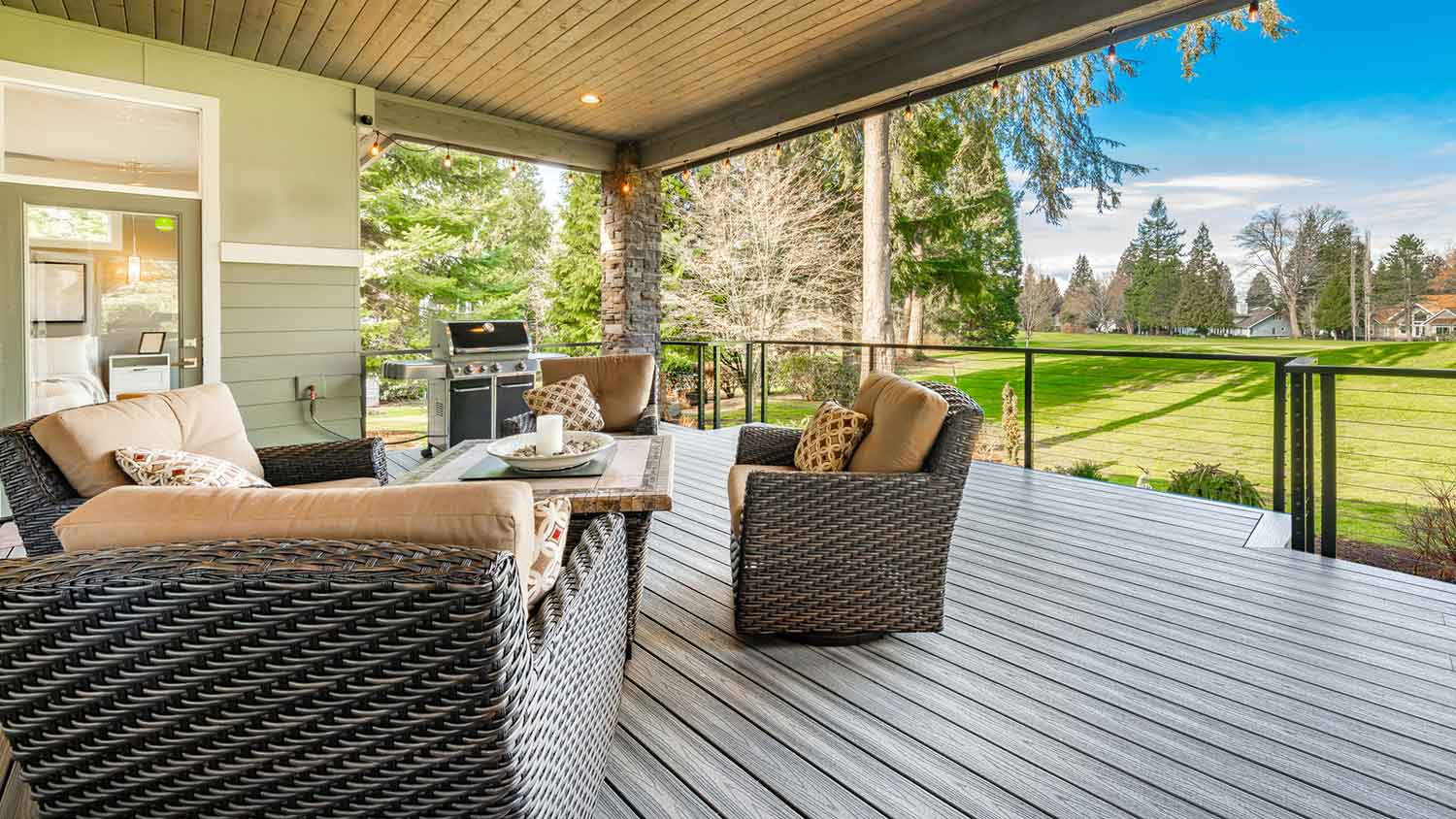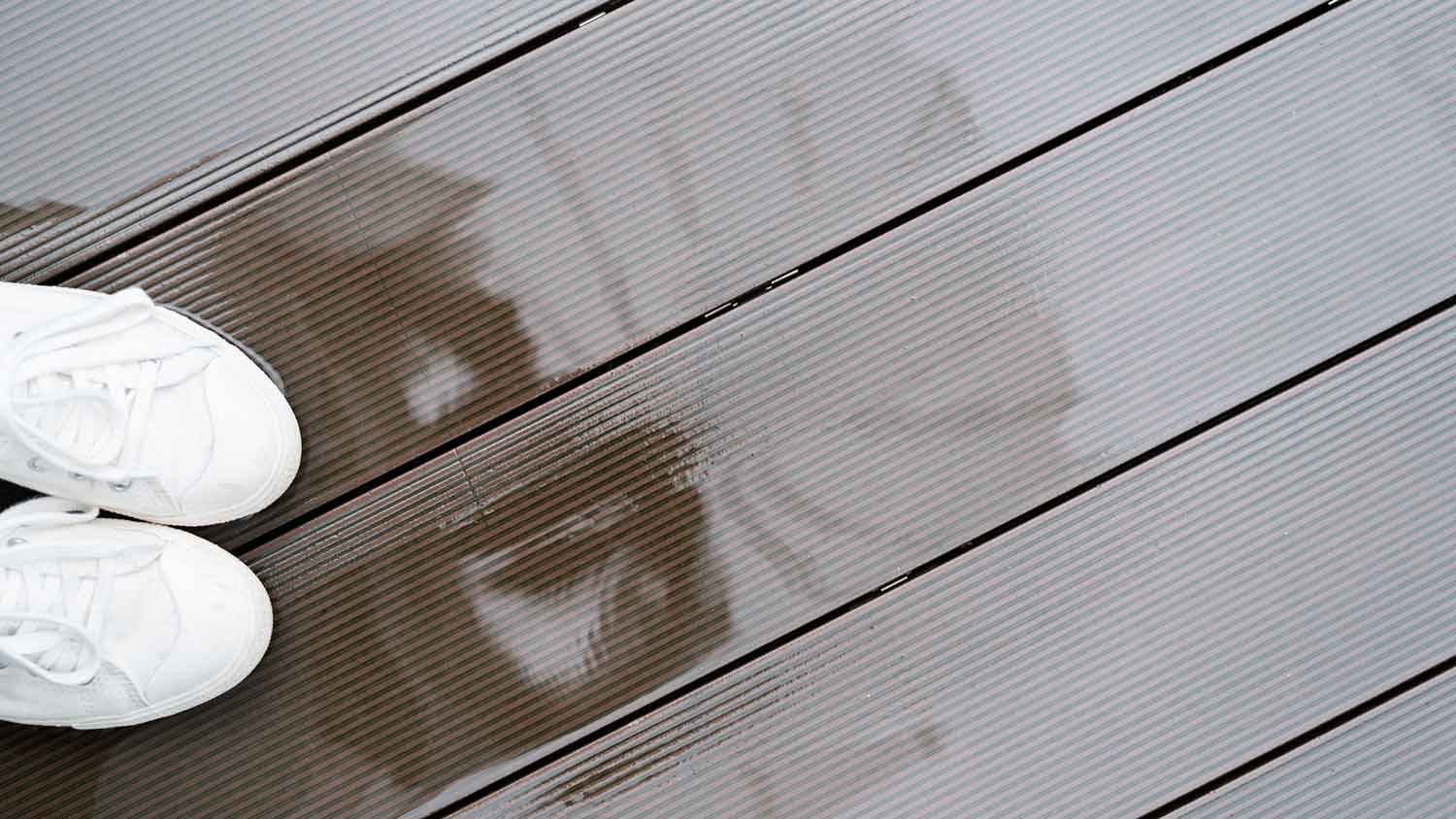
Refinishing your deck is a great way to restore its appearance and fall in love with your outdoor space. Use this guide to learn how much it costs based on factors like size and type.
Don’t lose your composure over composite decking woes


The most common problems homeowners experience with composite decking are fading, warping, scratching, and board expansion and contraction.
Other potential issues include a rotting subframe, mold and mildew growth, heat retention, and slipperiness when wet.
Because repairing composite decking is difficult, calling a pro for advice is often the best solution.
Wood decks are timeless, but wood isn’t the most weather-resistant material. Composite decking is a modern alternative, combining wood fibers and plastic to make a durable material that doesn’t have the moisture issues that wood does. However, that doesn’t mean composite is perfect. This guide reviews the eight most common composite decking problems and their solutions.
Prolonged exposure to sunlight can cause composite decking to fade. That rich color you loved when the deck was first installed can look patchy and drab, and the difference can be especially noticeable if your deck has both shady and sunny areas.
Opt for a composite that has a UV-resistant coating. Alternatively, you might be able to stain older composite materials. Check the manufacturer’s recommendations before doing so.
Composite is made from wood fibers bonded using plastics and binding agents. This mixture of ingredients is susceptible to high temperatures, causing composite decking to warp, bend, and crack.
Choose a high-quality composite that’s less likely to warp when exposed to heat. If one of the deck boards is excessively warped, you might need to replace it with a new one.

Composite decking is extremely durable and resists scratching well. However, it’s not immune to damage from moving heavy furniture or outdoor equipment on the deck.
If you must move heavy items on the deck, do it in teams of two or more people. Pick up the furniture so it clears the deck boards. Never drag heavy furniture—you can damage your deck and injure yourself.
Although composite decking itself is rot-resistant, the subframe may not be. Deck subframes are often made from timber, which can rot if moisture gets trapped between the subframe and deck boards.
Treat the subframe for moisture resistance and ensure enough ventilation between the subframe and the deck boards to prevent trapped moisture.
As temperatures rise and fall, composite decking boards can expand and contract. If the boards do not have sufficient gaps between them, structural issues can arise when they expand.
If you’re installing the decking yourself, follow the manufacturer's directions on proper spacing to accommodate expansion and contraction. Adjust the spacing as needed throughout the season.

Composite decking is mostly mold- and mildew-resistant. However, if the deck’s protective layer of polymer doesn’t extend around the board, moisture can seep into the wood core and cause moisture issues.
Removing mold and mildew from composite decking is extremely difficult, so you may need to replace affected boards. When installing decking, ensure it has a protective cap to prevent moisture damage.
Because composite decking contains plastic, it can get much hotter underfoot in the sun than wood decking. During the hottest summer days, this can be a significant downside to composite decking.
Use outdoor rugs creatively to make a path from your back door to the deck steps, eliminating the need to put your bare foot directly on the hot surface. Alternatively, don’t walk on the deck without shoes.
When exposed to water, composite decking can become more slippery than wood. This can increase the chances of injury on rainy days (or for decks built near pools).
Choose composite deck boards with a textured finish or anti-slip coating, and don’t walk on a wet deck without the appropriate grippy footwear.
Composite decking is harder to repair than wood because it can’t be sanded, painted, or stained. Damaged boards usually need to be replaced, and doing so can be difficult if you don’t have the appropriate DIY experience. We recommend calling a local deck builder to inspect your deck and recommend the best path forward.
From average costs to expert advice, get all the answers you need to get your job done.

Refinishing your deck is a great way to restore its appearance and fall in love with your outdoor space. Use this guide to learn how much it costs based on factors like size and type.

Flagstone patio costs vary by the size, material type, labor, and more. Stay tuned to see how much your flagstone patio could cost.

Discover how much it costs to build a balcony, including average prices, cost factors, and tips to budget your project. Learn what impacts balcony construction costs.

Are you wondering if a porch or deck is better for your home? Compare the pros and cons of these two outdoor favorites to help you find your best fit.

A portico is a small, porch-like structure that adorns and protects a home’s front entrance. Learn what makes a portico and the benefits of building one.

Installing an under-deck drainage system helps protect your investment and provides a dry underhang for events during the rainy season. Here are the ways to do it.